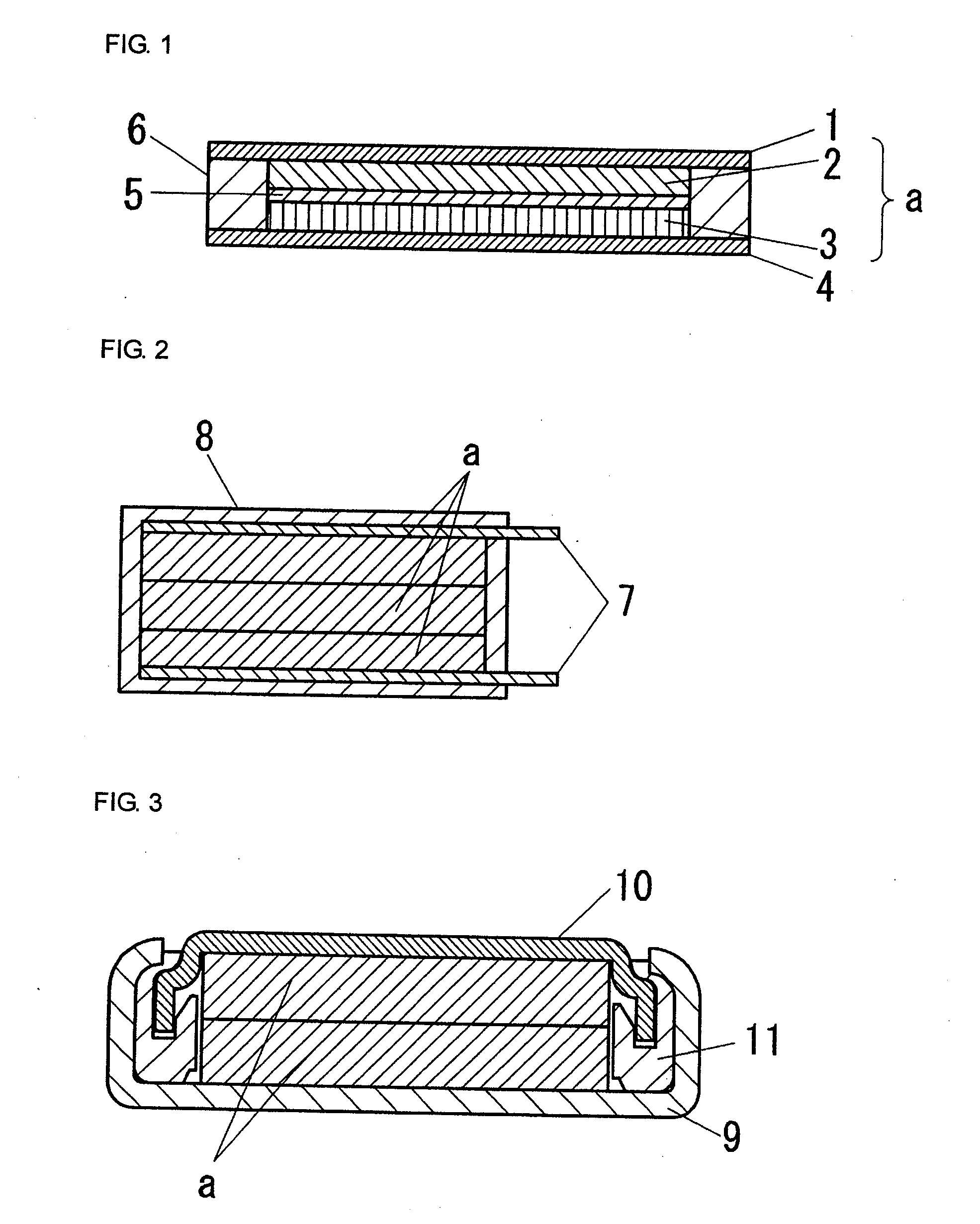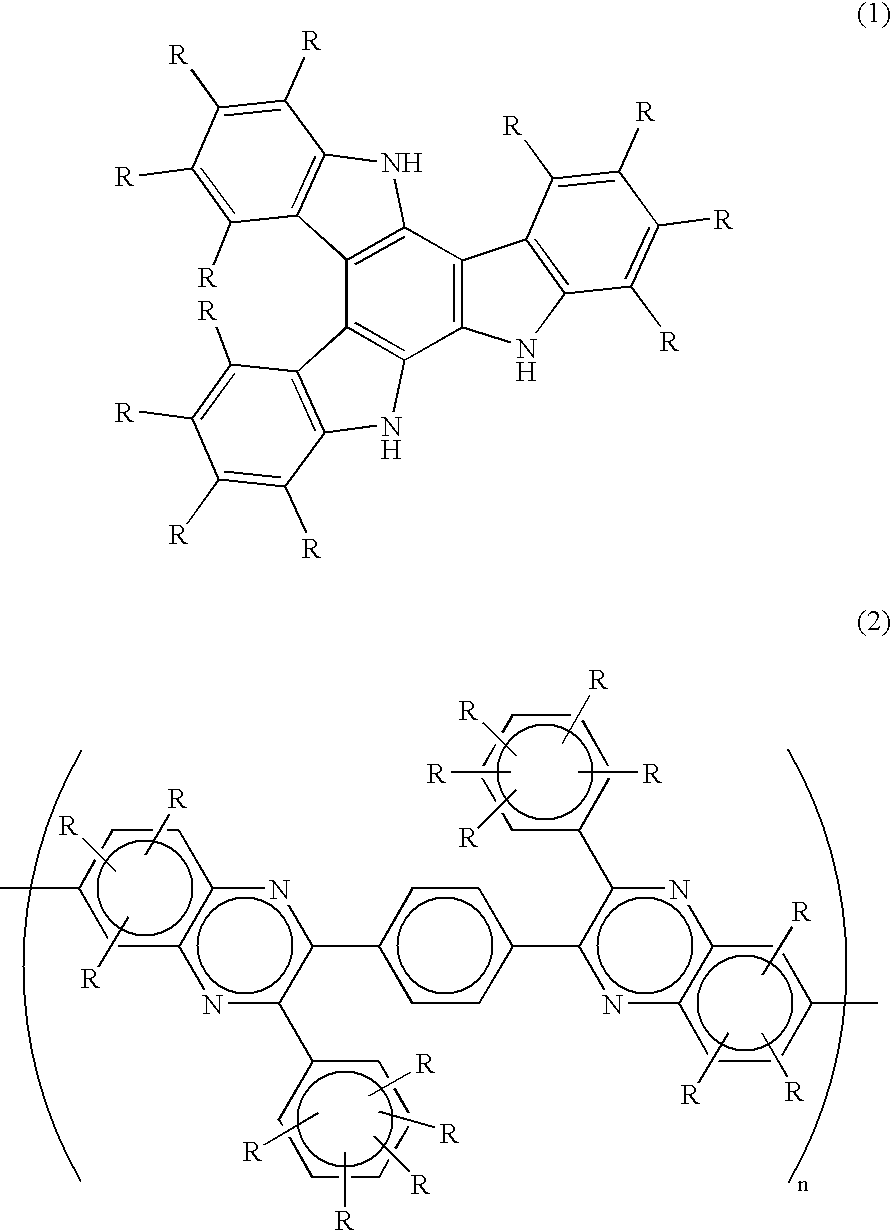Proton-conducting polymer battery
a technology of protons and polymers, applied in the field of protons and polymer batteries, can solve the problems of battery swelling, increase in boiling point, etc., and achieve the effect of preventing the deterioration of the active material of the electrod
- Summary
- Abstract
- Description
- Claims
- Application Information
AI Technical Summary
Benefits of technology
Problems solved by technology
Method used
Image
Examples
example 1
[0048]Methyl indole-6-carboxylate trimer was selected as a cathode active material; VGCF, which is a fibrous carbon, was selected as a conduction auxiliary agent; and PTFE was selected as a binder. A slurry was prepared from these compounds with a weight ratio of 69:23:8, respectively, which was formed into an electrode to provide a cathode with a diameter of 2.1 mm and a thickness of 200 μm.
[0049]In terms of an anode, polyphenylquinoxaline selected as an anode active material was stirred and blended by a blender with Ketjen Black EC600JD as a conduction auxiliary agent in a weight ratio of 75:25, respectively, which was formed by pressing to provide an anode with a diameter of 2.3 mm and a thickness of 200 μm.
[0050]A PTFE film with a thickness of 50 μm was used as a separator. The cathode and the anode described above were stacked such that their electrode surfaces face each other via the separator. After impregnation of an electrolytic solution, the assemble was vulcanization-seal...
PUM
 Login to View More
Login to View More Abstract
Description
Claims
Application Information
 Login to View More
Login to View More - R&D
- Intellectual Property
- Life Sciences
- Materials
- Tech Scout
- Unparalleled Data Quality
- Higher Quality Content
- 60% Fewer Hallucinations
Browse by: Latest US Patents, China's latest patents, Technical Efficacy Thesaurus, Application Domain, Technology Topic, Popular Technical Reports.
© 2025 PatSnap. All rights reserved.Legal|Privacy policy|Modern Slavery Act Transparency Statement|Sitemap|About US| Contact US: help@patsnap.com



